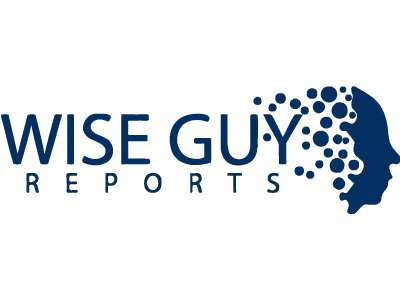Chemicals Industry Today
Steel Scrap Market Set to Surge From USD 211 Billion in 2024 to USD 250 Billion by 2032 — Unlocking Sustainability and Industrial Resilience
The Steel Scrap Market is entering a period of measured yet meaningful growth. In 2023, the market stood at USD 206.71 Billion, projected to reach USD 211.12 Billion in 2024, and expected to expand further to USD 250 Billion by 2032, achieving a compound annual growth rate (CAGR) of around 2.13% during 2025–2032. This growth reflects an industry-wide shift toward sustainability and efficient resource utilization.
Market Drivers and Strategic Impetus
1. Decarbonization via Electric Arc Furnaces (EAFs)
The transition from traditional blast furnaces to EAFs — which essentially remelt scrap steel using electricity — is accelerating globally. This method significantly reduces carbon emissions and reliance on virgin iron ore. For instance, in the UK, the shift toward EAFs is seen at facilities such as Cardiff’s Celsa steelworks and Tata Steel’s Port Talbot plant.
2. Steel Scrap as a Strategic Raw Material
The global scrap demand is currently estimated at 600–650 million tonnes, with forecasts reaching 800 million tonnes by 2030, and nearly 1 billion tonnes by 2050, as the steel industry reinforces sustainability goals. As scrap becomes more essential to net-zero steel strategies, securing supply chains will be critical.
Get a Sample Free PDF Report To Understand Our Report Before You Purchase: https://www.wiseguyreports.com/sample-request?id=644219
3. Circular Economy and Policy Incentives
Stringent regulations, such as proposed EU Waste Shipment Regulation changes by 2027, aim to limit scrap exports that cannot demonstrate sustainable treatment standards. These rules will strain global scrap supplies and heighten the value of domestically retained scrap.
4. Rise of Scrap Recycling Market
While distinct from the steel-specific snapshot, the broader Scrap Metal Recycling Market is projected to grow from USD 263.06 Billion in 2024 to USD 350 Billion by 2032, at a stronger CAGR of 3.64%. This reflects elevated environmental awareness, regulatory push, and technological advancements in sorting and processing.
Challenges on the Horizon
- Supply Chain Volatility: Heightened competition for scrap — intensified by global recycling restrictions — may constrain supply and elevate costs.
- Energy Cost Pressures: EAF operations are electricity-intensive. Regions with high power prices (e.g., the UK paying £68/MWh compared to €44–52 elsewhere) could struggle with competitiveness.
- Market Fragmentation: The recycling industry remains fragmented, with many small players and uneven infrastructure across regions.
Opportunities & Innovations
• Technological Advances in Recycling
Automation, AI, and blockchain-based systems are enhancing scrap quality, traceability, and processing efficiency — making recycling more cost-effective and reliable.
• Strategic Investments in Infrastructure
Governments and corporations investing in plate mills, Direct Reduced Iron (DRI) plants utilizing hydrogen or methane, and expanded EAF capacity are building a more resilient, low-carbon steel industry.
• Strategic Role of Scrap Suppliers
Especially in Europe, modeling shows that every 1,000 tonnes of EAF capacity corresponds to an additional 550 tonnes of scrap imports and reduced scrap exports — underscoring scrap firms as essential players in industrial transformation.
Forecast Outlook (2025–2032)
- Steady Expansion: From USD 211 B in 2024 to USD 250 B by 2032 — ~2.13% CAGR.
- Increased EAF Adoption: As more steelmakers commit to decarbonization, scrap demand will rise.
- Policy Alignments: Circular economy mandates and trade restrictions are likely to reinforce local demand.
- Digital and Automation Gains: Enhanced sorting, traceability, and efficiency will bolster margins.
Make a Direct Purchase: https://www.wiseguyreports.com/checkout?currency=one_user-USD&report_id=644219
With sustainability and circular economy imperatives at the forefront, the Steel Scrap Market is poised for resilient growth, reaching an estimated USD 250 Billion by 2032. The push toward EAF-based steel production, regulatory shifts, recycling innovation, and reinforced scrap supply chains will collectively drive the sector forward. Press release distribution through channels like Industry Today ensures that stakeholders across steelmaking, recycling, energy, policy, and investment receive critical market intelligence to guide strategic decision-making.
TABLE OF CONTENT
- EXECUTIVE SUMMARY
- MARKET INTRODUCTION
- RESEARCH METHODOLOGY
- MARKET DYNAMICS
- MARKET FACTOR ANALYSIS
- HYDRAULIC CRANE MARKET, BY CAPACITY (USD BILLION)
Other Related Reports from WiseGuy Research References
Textile Air Ducts Market | Japanese | German | French | Korean | Chinese | Spanish
Uv Reflective Fabric Market | Japanese | German | French | Korean | Chinese | Spanish
Wood Fireproof Coating Market | Japanese | German | French | Korean | Chinese | Spanish
Uv Cut Tape Market | Japanese | German | French | Korean | Chinese | Spanish
Tarpaulin For Tent Market | Japanese | German | French | Korean | Chinese | Spanish
You May Also Like This Regional Reports:
Marché de la ferraille d'acier | Stahlschrottmarkt | 철스크랩 시장 | 废钢市场 | Mercado de chatarra de acero | 鉄スクラップ市場
Share on Social Media



Other Industry News
Ready to start publishing
Sign Up today!








